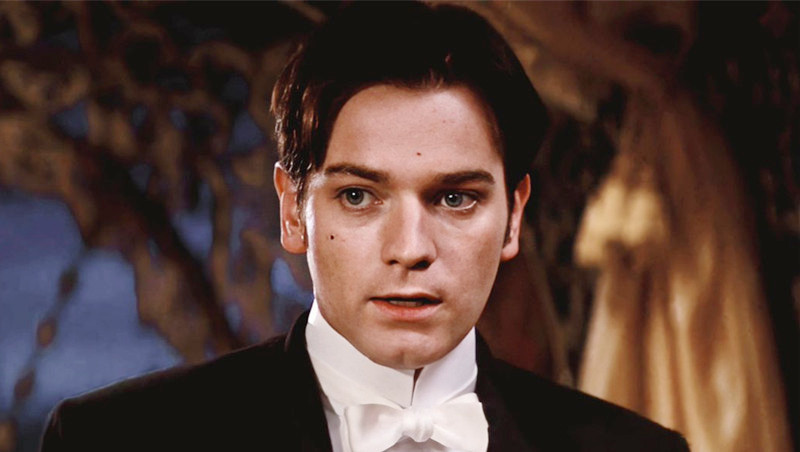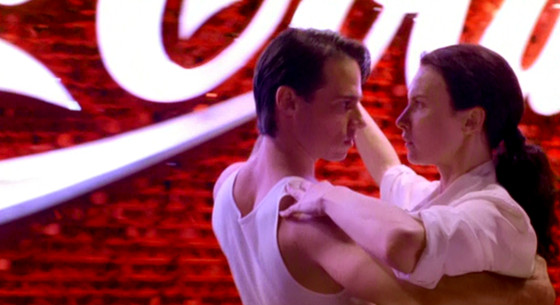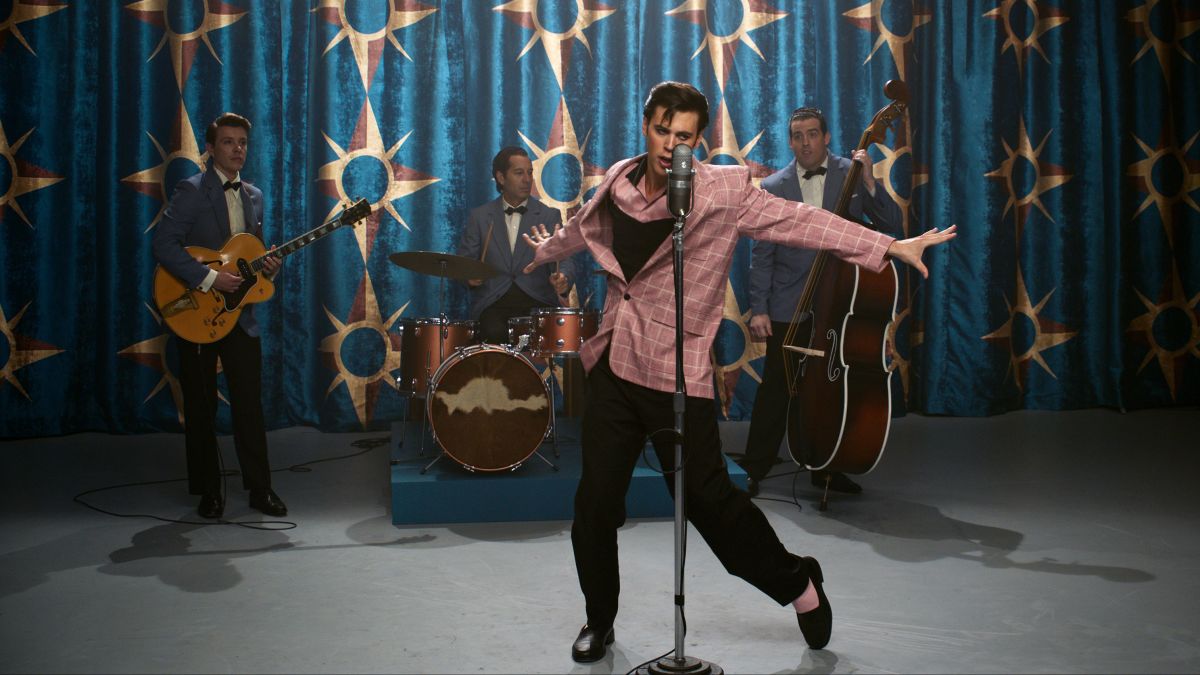
“Truth, beauty, freedom, love.”
Baz Luhrmann’s films are an incendiary bubblegum crossroads, where Italian grand opera, Bollywood, Greek myths and Hollywood Technicolor collide. Growing up in rural Herons Creek, New South Wales, Baz Luhrmann was informed by his father’s profession as a cinema owner and the ballroom dancing he practiced with his mother. In the ‘80s, Luhrmann established himself as an actor on stage and screen. Today, he’s Australia’s most celebrated auteur, an unrivalled master of the romance genre with a distinctive vision. Like Wes Anderson, he successfully toes the line between postmodern pastiche, ironic humour and heartfelt storytelling.
Often co-writing with actor Craig Pearce, thematically, Luhrmann’s tragi-comic screenplays depict the rift between true love and conformity to society’s mores, revolutionary bohemianism versus the conservative establishment, echoing the counterculture of the ‘60s. Whether one’s taken with his unique stylisation or not, the elephantine artistic, literary and technical triumphs of his epics are irrefutable.
He regularly collaborates with actors Nicole Kidman, Leonardo DiCaprio, John Leguizamo, Richard Roxburgh, Bill Hunter and David Wenham. Additionally, his partnerships with cinematographers Mandy Walker and Donald McAlpine have manifested his idiosyncratically camp, maximalist, carnivalesque, saturated rainbow aesthetic. When watching a Luhrmann film, just sighting one of the shots, each as beautiful, thoughtful and fastidiously-crafted as a painting, one’s immediately aware of his hand.
Alongside lavish costumes and vast, studiously-detailed baroque sets (orchestrated by his wife, Catherine Martin), Luhrmann’s films’ soundtracks are an eclectic jukebox gumbo of contemporary and historical popular music. His magical realist universe, where colours pop and the world is heightened to dreamlike impressionism, is as instantly recognisable as Tarantino’s.
One of Luhrmann’s most prominent signatures is his ambitious crane camera pans: cartoonish landscapes rapidly zooming into a character portrait, mixing both photography and CGI. Despite it often being a faux pas in filmmaking, sampling from Alejandro Jodorowsky, Luhrmann’s seamlessly perfected the zoom, noteworthy when swelling dramatic tension in close-ups. There’s a musical timbre, a heartbeat to the kaleidoscopic collaging of his films’ fast cuts. This is attributable to his editor Jill Bilcock, whom he’s been collaborating with since his debut feature in 1992.
In addition to filmmaking, Luhrmann has directed opera, a limited series and the most expensive advert in history for Chanel: No.5 the film with Nicole Kidman (2004), which cost $33 million. Uncontrovertibly, Luhrmann stands as one of the most exciting, talented and original writer-directors working today.
6. Strictly Ballroom (1992)

Based upon his 1984 stage play, Luhrmann’s debut tells the story of Scott Hastings (Paul Mercurio): a champion ballroom dancer with scandalous moves. When his dance partner leaves him for a champion, Scott reluctantly partners with the shy Fran (Tara Morice). They face disapproval from the Australian Dance Federation as they practice for the Pan-Pacific Grand Prix Dancing Championship.
Boring, shallow, unoriginal and corny, it’s baffling a film this pointless and heartless even exists. Even for fans of ballroom dancing, its predictable screenplay and Paul Mercurio’s painfully cringeworthy ‘acting’ renders its generic ugly duckling story essentially unwatchable. The protagonist is condescending and nasty towards his leading lady. He doesn’t consider her attractive enough for his standards.
This results in a repulsively unlikeable main character, with more villainous than heroic traits. With his snobbery leaving the audiences with a bitter taste in their mouths, he fails to obtain emotional investment – disastrous in a protagonist. This denotes Luhrmann’s lack of screenwriting knowledge at this juncture, to be expected at the birth of his filmmaking career.
The supporting characters are just as vapid and underdeveloped. Even Bill Hunter and Pat Thompson’s well-crafted caricatures are not enough to save this disastrous waste of time, which merely rips-off superior titles like Footloose or Dirty Dancing.
The first instalment of the ‘Red Curtain Trilogy’ does, however, foreshadow all the themes, vivacious camera movements (such as Leone-esque portrait zoom-ins), the glitzy, Almodóvar-inspired production design and fluid, musical editing he’d go on to refine later. Regardless, this time-robbing misstep is an embarrassment to Luhrmann’s otherwise celebrated career and must be avoided at all costs. A 5-minute instructional dance video would’ve been a more enjoyable and appropriate format than an hour and a half of meaningless, vacuous indulgence in style over substance and unpleasant, forgettable characters.
5. Australia (2008)

“Just because it is, doesn’t mean it should be.”
In this meat pie western meets World War 2 romance, English aristocrat Lady Sarah Ashley (Nicole Kidman) must drive a herd of cattle with a cowboy known as The Drover (Hugh Jackman) across the outback to Darwin. Meanwhile, they’re threatened by the villainous cattle baron King Carney (Bryan Brown) and his henchmen. Later, the pair must rescue their young friend, Nullah (Brandon Walters), after he’s deported to an island. Showcasing Australia’s finest acting legends, there are performances from David Gupilil, Bill Hunter and Killing Them Softly’s Ben Mendlesohn.
Australia is an important film for addressing the Stolen Generations, where mixed-race children were confiscated from their families by the government. Moreover, the screenplay deals with the tyranny of British colonialism and the impact this has had on the lives of Aboriginals. It promotes friendship, discussion and resolution between European and Indigenous cultures, though, at times, it could be criticised for exercising the ‘white saviour’ trope. Mandy Walker’s mystical shots of the photogenic David Gupilil as a shaman in the outback comprises the film’s aesthetic richness, referencing Emmanuel Lubezki.
In a tonal departure, Luhrmann successfully turns his hand to action sequences: both in the air and on terrain. He crafts one of cinema’s most-suspenseful scenes, where a herd of cattle charge at Nullah, whilst he’s perched on the promontory of a cliff. Despite being only 12 at the time of the film’s release, Brandon Walters effortlessly carries the film with his naturalistic talent, humour and star quality, matching or surpassing the aptitude of Kidman and Jackman. Furthermore, Australia’s soundtrack is especially notable, making use of didgeridoo, wobble board and jaw harp for an appropriately regional sound.
On the other hand, at nearly 3 hours in duration, Australia is unequivocally over-long for its minimal content. This sprawl is exasperated by its slow plot progression, overly spacious scenes and slightly aimless narrative, when judged against Luhrmann’s more exciting triumphs. Its plot is an unoriginal, derivative rehash of superior classic westerns. What is more, Kidman and Jackman have poor chemistry. With their affection feeling forced and nonexistent, it’s unbelievable that they could conceivably engage in a tryst, upending the credibility of the entire film. The screenplay paints their interactions as hammy, undeveloped and insubstantial, making for further dramatic detraction. There must be electricity between the two leads and a palpable connection in the writing for an epic romance to shine. Although Australia is a good film, overall, Luhrmann fails to hit his target.
4. Elvis (2022)

With nearly a decade since his last film, Luhrmann returned to the screen with a biopic of epochal rock ‘n’ roll singer Elvis Presley. Focusing on Elvis’s relationship with his manager Colonel Tom Parker, the film chronicles the star’s childhood, through the genesis of his career at Sun Records in the mid-‘50s, all the way up until his death in 1977. Once Upon a Time… in Hollywood’s Austin Butler plays the titular role, with Tom Hanks as Colonel Tom Parker.
Butler spent two years perfecting his performance, vocals and dance moves, studying Elvis intensely. His insurmountable effort clearly paid-off. With pitch-perfect singing and acting, he thoroughly “melds himself with Elvis’s spirit,” in what is one of the most monumental acting achievements of the 21st century. The script offers a tearjerking, in-depth exposé of the tragic exploitation of a humungous talent, analysing the American Dream.
Drawing upon Luhrmann’s countercultural concerns, the film’s most explosive, affecting moment is when Elvis’s popularity skyrockets at the Louisiana Hayride concert. Luhrmann expertly evokes the gravitas, rebellion and cultural revolution that that event incurred, elevated by the punchy, powerful quality of its sound design. Not only serving the narrative, it aids in the audience’s understanding of Elvis’s indelible artistic and historical significance.
However, Luhrmann overuses montage in the film’s first act. Although it’s an understandable technique in such a storied career, it makes for a disengaging narrative, resembling a documentary or an encyclopedia more than a movie. What is more, when the montage does end, Luhrmann’s propensity for fast cuts doesn’t provide the actors with enough time or space to engage in dramatic, conversational scenes, suffering from the overcrowding common in many biopics.
Luhrmann has stated himself that his intention with the film was to use Elvis as a metaphorical catalyst for social change between ‘50s and ‘70s America. Although some aspects of Elvis’s personality are explored, such as his gospel church spirituality, it’s evident that Luhrmann is not that interested in Elvis as a person. A character study of his intimate personality, from his sense of humour, to his interior life, to his passions, such as karate, are forsaken in favour of a depiction of him as a mythical pop totem.
In addition, the glittery, grandiose production design, placing it in the heightened, pastiched universe of Luhrmann’s other films, at times, feels out of place in Elvis. It plays like a great Baz Luhrmann flick, but in retrospect, his signature stylisation slightly blurs the communication of the verisimilitude of Elvis’s true story, the magical realism playing as somewhat inappropriate to the tragedy. Tom Hanks was also clearly miscast, his accent an embarrassing, subpar impression of a
German rather than a Dutch man. His prosthetics are obvious and appear ridiculous on him, further detracting from the film’s dramatic reality. His role would’ve been far better suited to an actual, accomplished Dutch actor with a comparable appearance to Parker’s.